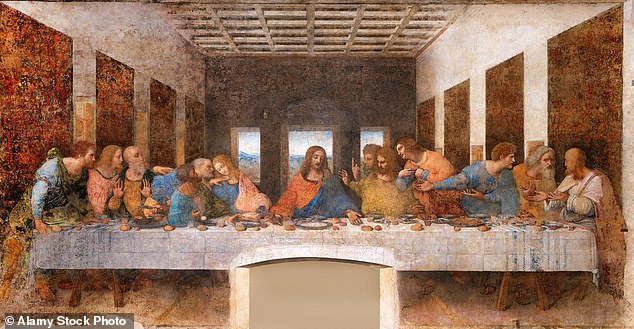The Last Supper, Jesus’ final meal with his apostles before he was crucified, is one of the most iconic stories in the Bible.
Now, 2,000 years later, archaeologists are channeling their efforts into finding its exact location in Jerusalem.
They believe the biblical encounter took place in the “Cenacle” of a two-story house with limestone walls and a sloping red roof that still stands in the town.
The location has been documented in several works of art dating back to at least the 4th century AD, which was also when Christians began visiting the room to honor Christ’s final moments of freedom before the crucifixion.
And thousands of people continue to visit the Cenacle every year.
Thousands of Christians visit the Cenacle every year, the place where Jesus is believed to have celebrated the Last Supper. Pictured: The Last Supper, painting by Leonardo da Vinci
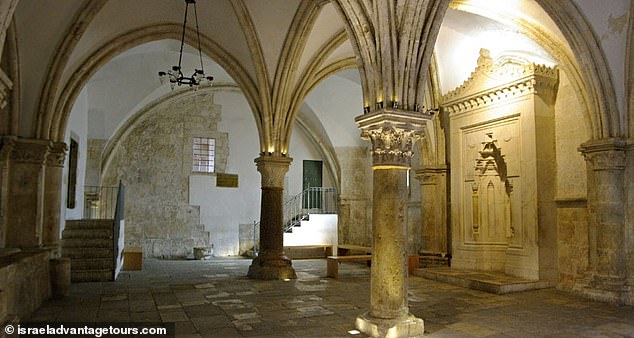
The Cenacle is part of the original church that contained the Upper Room (pictured) and was a center for Jewish Christians to celebrate Jesus and was the only part of the building that was saved when Jerusalem was destroyed in 70 AD.
The Bible details the story of the Last Supper in 33 AD, when Jesus sat down with his 12 apostles and told them that one of them would betray him, adding that his death was imminent.
He blessed the bread and wine, explaining that they represented his body that would be broken and the blood that would be shed for the forgiveness of their sins.
The Cenacle, also known as the Upper Room, was originally a prayer hall that could seat over 120 people.
The room is briefly described in the book of Luke 22:11-13, when Jesus requested a large, furnished upper room where he and his disciples could eat their Passover meal.
The Cenacle is located in the ancient city of Jerusalem on Mount Zion, situated above the South Gate, and was built with large branching columns supporting a vaulted ceiling and a sloping red roof that still exists today.
Since researchers have not been able to carry out any archaeological excavations, they cannot confirm whether the building existed during the Last Supper.
In 1884, Greek Orthodox Christians discovered what is believed to be the oldest map of Jerusalem while building a new church in Madaba, Jordan.
The map was created in 560 AD as a representation of the Holy Land showing the Cardo Maximus (main street) extending through the middle section and two sacred structures at the southern end (lower right side) that were identified by their red roofs.
All the views were described in Greek, including the Damascus Gate and Square on the left side, the Jaffa Gate to the south at the bottom, and Bethlehem on the far right.
But it wasn’t until 2017 that David Christian Clausen, an associate professor of religious studies at the University of North Carolina, noticed something unusual: There was a building with the same slanted red roof as the Cenacle, and it was in the same location.
This led researchers to suspect that the Cenacle was the site of the Last Supper, but they still needed more evidence, which appeared in a 6th-century drawing discovered in Italy in 1846.
The drawing showed Jesus riding a donkey through the southern gates of the city with the Cenacle in the background.
This story is told in the Book of Matthew, which tells of Jesus’ entry into Jerusalem to fulfill Zechariah’s prophecy that there would be a “Second Coming of Jesus Christ” and the dead would be resurrected.
The story goes: “Tell the city of Zion: Look, your king is coming to you. He is humble and rides on a donkey and on a colt, the foal of a donkey.”
In 1585 AD another depiction of the site was discovered: a 4th-century sculpture showing Jesus standing before Mary Magdalene after rising from the dead, and just behind where he stood was a building with the same sloping roof.
According to the Book of John, Jesus returned to the Upper Room after his resurrection, linking the depiction of him and Mary Magdalene to the biblical story.
However, some archaeologists have argued that the sculpture shows Christ standing before an unknown kneeling woman asking him to heal her, rather than depicting his resurrection.
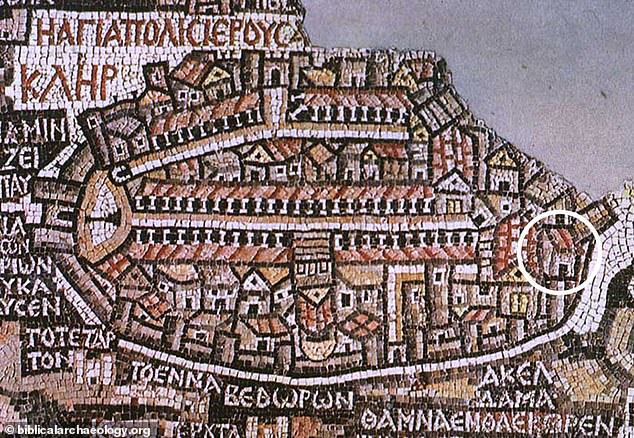
The Madaba mosaic (pictured) appears to show the structure in the right corner of the map, next to Hagia Zion.
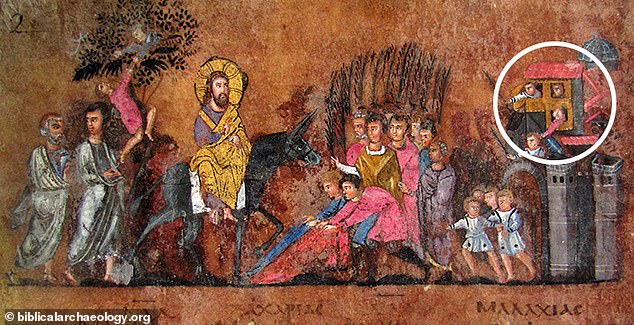
Another 6th-century BC drawing from a Gospel manuscript shows Jesus entering Jerusalem on a donkey, and the gate he is approaching appears to be in the city’s southern wall (pictured).
The Israel Antiquities Authority (IAA) set out to test the theory in 2019 by using laser technology and advanced photographic imaging to remove all the updates made to the Cenacle over the years and reveal how it originally looked during the Last Supper.
“I felt like I was in Dan Brown’s book, ‘The Da Vinci Code,'” said Amit Re’em, an archaeologist in the Jerusalem district of the Israel Antiquities Authority (IAA). Fox News At that time, “we needed to decipher the ancient symbols.”
They mapped every corner of the room to “create accurate models of the space” that revealed interesting features of the Cenacle.
The newly created images showed “dark” artwork, such as the symbols of the Agnus Dei, or “Lamb of God,” and the Lion of Judah on the ceiling.
“The lion was the symbol of King David,” Re’em told Fox, explaining that “according to ancient scriptures, Jesus was a descendant of King David.”
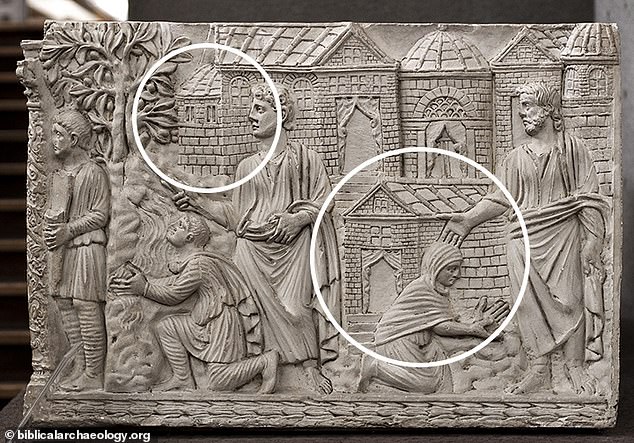
An artistic representation that appeared to show the Cenacle (circled on the left) was discovered on a 4th-century sarcophagus sculpture showing the Son of God healing a woman or comforting Mary Magdalene after his resurrection.
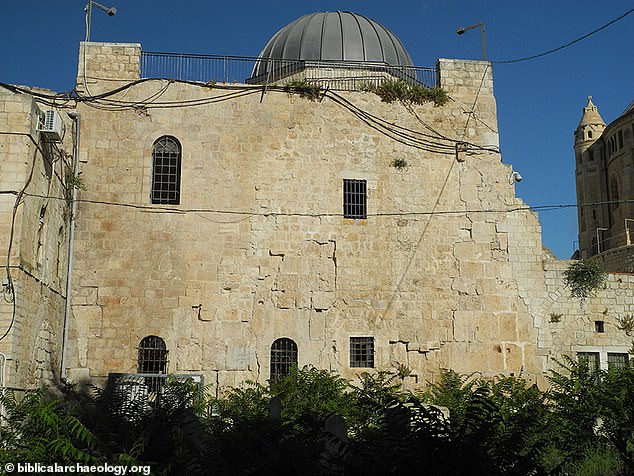
The Cenacle (pictured) is still not universally accepted as the Cenacle and its ancient, worn surfaces and poor lighting have inhibited archaeologists’ ability to study the space.
Researchers still need to conduct further studies, according to Re-em, who said there is still no archaeological evidence that the Cenacle was the site of the Last Supper.
The IAA has previously said that poor lighting at the site, discoloured walls and ongoing renovations have prevented it from carrying out further investigations.
“From time to time, when we have the opportunity, we continue to document other parts of the sacred complex,” Re’em told Fox.
“I hope that perhaps in the future we will have the opportunity to conduct small-scale classical archaeological research.”
DailyMail.com has contacted the IAA to ask about its plans for future studies.


